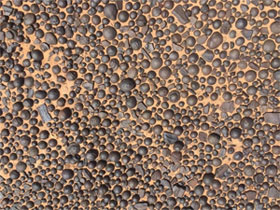What are Polymetallic Nodules? Answer with reference to India.
Sakshi Education
By Srirangam Sriram, Sriram's IAS, New Delhi.

India: 

Deep-ocean polymetallic nodules form on or just below the vast, sediment-covered, abyssal plains of the global ocean. Polymetallic nodules primarily consist of precipitated iron oxyhydroxides and manganese oxides, onto which metals such as nickel, cobalt, copper, titanium and rare earth elements sorb. The enormous tonnage of nodules on the seabed, and the immense quantities of critical metals that they contain, have made them a target for future mining operations. Mining of polymetallic nodules has been spurred by the need for critical metals to support growing populations, urbanization, high-technology applications and the development of a green-energy economy.
Key points
Key points
- Polymetallic nodules cover vast areas of the abyssal ocean floor and contain significant amounts of critical metals.
- The chemical and mineralogical compositions of polymetallic nodules are primarily controlled by their formation process.
- A unique characteristic of deep-ocean nodules compared to terrestrial deposits is the presence of multiple commodities in one deposit; for example, nodules from the Clarion–Clipperton Zone contain Mn, Ni, Cu and Co.
- Deep-ocean mining might avoid some of the environmental issues associated with terrestrial mining.
India:

- Deep Ocean Mission focused on the extraction of Polymetallic Nodules
- Through an agreement with the International Seabed Authority, India has a right to explore and mine polymetallic nodules over 750,000 square km in the Central Indian Ocean Basin (CIOB).
Published date : 09 Nov 2020 12:20PM













